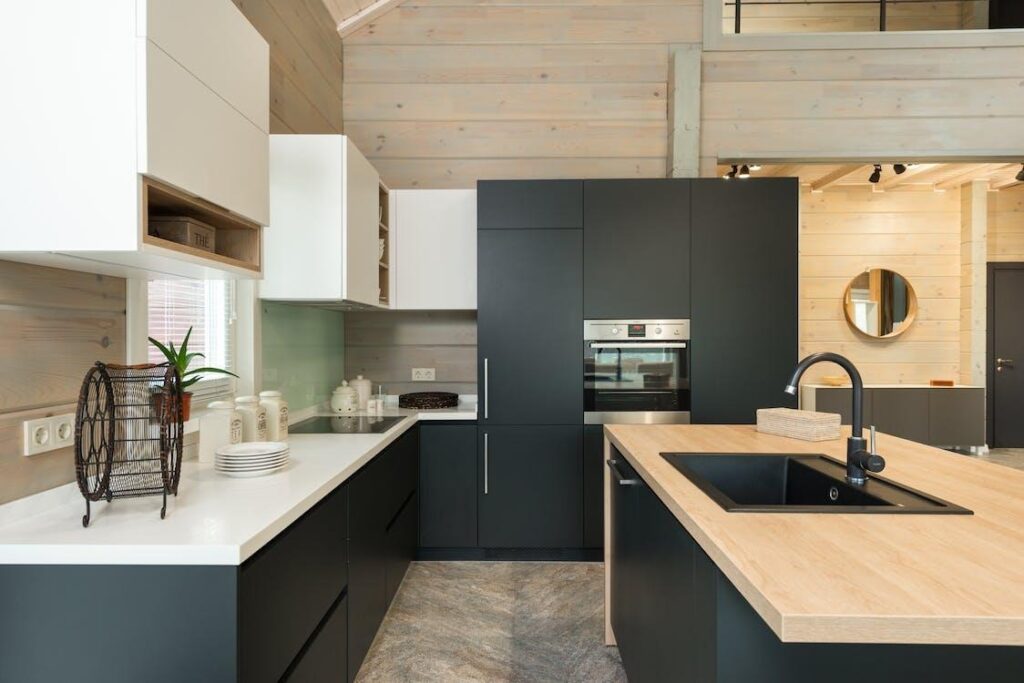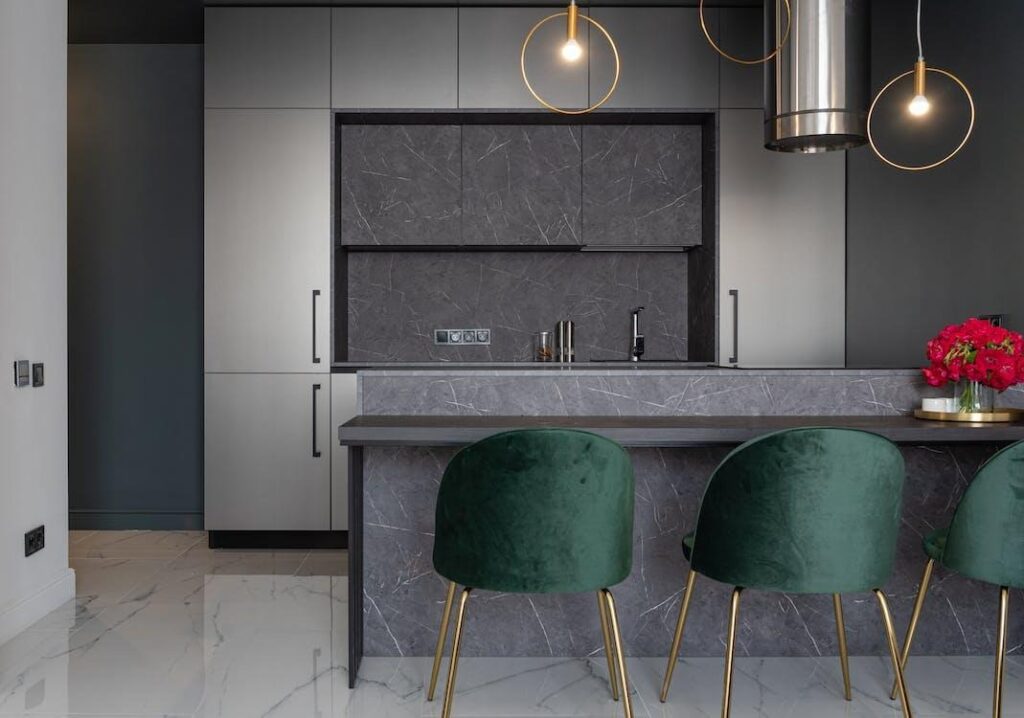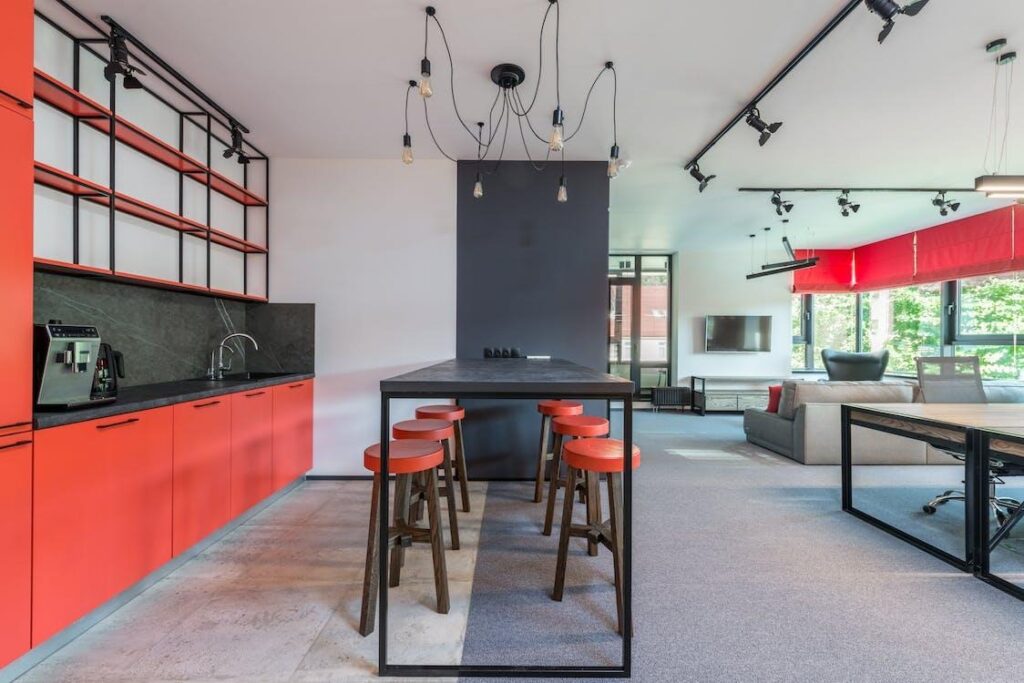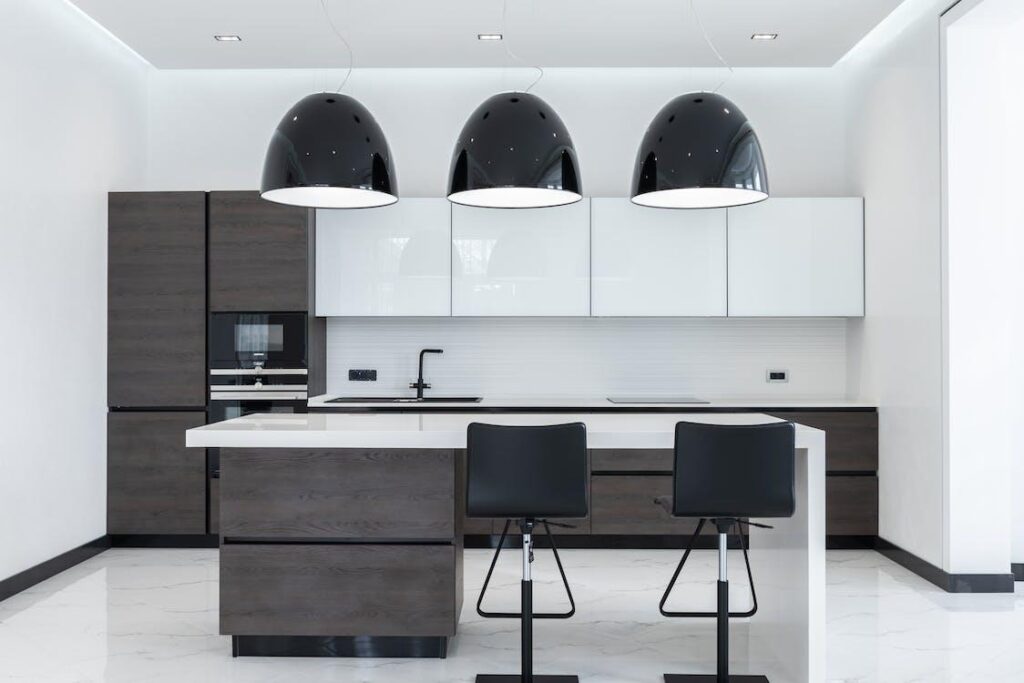Acrylic Kitchen – A boon or a bane
Every home has a modular kitchen these days. Wood, glass, MDF, laminate, lacquer, commercial plywood, and acrylic are the most commonly used materials for kitchen cabinets. While wood and glass have been traditionally used, the others are relatively new and gaining popularity. Amongst the newer materials, acrylic is one of the most commonly used ones.
The greatest advantage of an acrylic cabinet is its high gloss. Rigid Thermofoil (RTF), and Laminate are a few other materials that have a highly glossy finish. But acrylic is more long-lasting and advantageous as compared to the rest. RTF tends to peel at high temperatures as it cannot withstand heat and moisture. Though laminate cabinets are durable, they tend to lose their gloss over time and are not recommended for heavy usage.
What is Acrylic?

Acrylic is a synthetic material made of resin. It is non-toxic, glossy, and gives a highly reflective finish. It is a premium finish and has become a popular alternative to glass. Acrylic is a high-quality plastic material. It is quite sturdy and does not crack or chip easily.
Types of Acrylic Kitchen Cabinets
There are two main categories of acrylic kitchen cabinets – solid acrylic doors and acrylic-finished doors.
Cabinets with solid acrylic are entirely made of acrylic, and hence are more appealing, have a uniform colour effect, and are expensive. Whereas, cabinets with acrylic finished door use MDF, wood, or even metal as the base material and acrylic sheets are pasted over them, covered with a protective layer, and sealed the at edges using edge bands. These are more budget-friendly but at the same time involve an elaborate and time-consuming process.
Acrylic kitchen cabinets come with advantages and disadvantages. In this article, we list down their various pros and cons so that you can take an informed decision.
Advantages of acrylic kitchen cabinets

- Aesthetically appealing
Acrylic kitchen cabinets are reflective and glossy. They can immediately brighten up the kitchen, add sheen, and give it a modern appeal. The premium-gloss finish is much in demand, especially in modern homes with high-end modular kitchens. It brings in elegance and also creates an illusion of space.
- Non-Toxic
Acrylic is a non-toxic material and hence can be safely used in homes with children, pets, or people who are prone to allergies.
- An Array of Choices
Acrylic finishes are available in various colours, shades, and textures. Grey, brown, red, teal, black, and white are a few of the popular colour choices. One can either opt for a monochrome finish or mix-n-match two colours or materials to break the monotony and create a unique and interesting look.
Wood or tiles can be combined with an acrylic finish to infuse variety.
- Long Lasting
Acrylic is a highly durable material. It is highly resistant to scratches, moisture, and UV light. They retain their gloss and shine for a long time and are not affected by regular wear and tear. Thus, acrylic finish cabinets will look and feel the same for many, many years.
- Ease of maintenance
Even though maintaining an acrylic kitchen cabinet is fairly easy, keeping these tips in mind would help in making it easier.
- Exposure to direct sunlight can damage the cabinets.
- Avoid harsh chemicals or abrasives, as they can reduce the gloss.
- Wiping the stains with a dry cloth would leave scratches on the surface.
- Regularly cleaning with a soft cloth and mild soapy water helps in keeping the cabinet doors in good condition and removing any dust or grime settled on the doors.
- Brushes, scrapers, rough paper towels, and steel scrubs are to be strictly avoided.
Disadvantages of acrylic kitchen cabinets

- Cost
Acrylic is a premium material and thus comes with a heavy price tag as compared to laminate or wood finish. One can opt for acrylic-finished doors instead of solid acrylic doors if budget is a constraint.
- Surface dirt
Since acrylic has a glossy and reflective finish, any minute dust, stain, or even fingerprints are highly visible. Grease and oil splashes are harder to remove once they have dried. Also, they can seep in and cause permanent structural damage.
- Replacement challenges
Since acrylic is chip-resistant, it will not damage easily. But in case it gets damaged, replacing a single cabinet door is difficult as one may not be able to find the same shade. Thus, leaving one with no option other than replacing the entire kitchen cabinet. It is both time-consuming and expensive.
Also, slight differences in shading might appear over time.
- Installation difficulties
Installing acrylic cabinets is tricky, as it involves sticking the acrylic sheets over MDF or ply base. If not done properly, it can lead to issues like chipping, peeling, and reduced longevity. Hence, it is extremely important to employ the services of a trained professional.
Colour Selection

Acrylic cabinets are available in a variety of colours. Since many of our customers frequently express their confusion over selecting the colour best suited to their home, we thought of sharing a few tips that can be taken into consideration –
- Space plays an important role in colour selection. If space is a constraint, lighter shades would help in creating more openness.
- The colour should be a reflection of your personality, and at the same time be aesthetically pleasing.
- Coordinating the backsplash and countertop with the cabinet colours helps enhance the appeal.
- Consider the wall colour, and natural lighting to choose an appropriate colour palette.
If you are looking to upgrade your kitchen or give it a facelift, changing the cabinets is the best way to go about it. Acrylic kitchen cabinets are long-lasting and easy to clean and the glossy finish would make your kitchen more appealing.
We hope this article helps you in making an informed decision.
